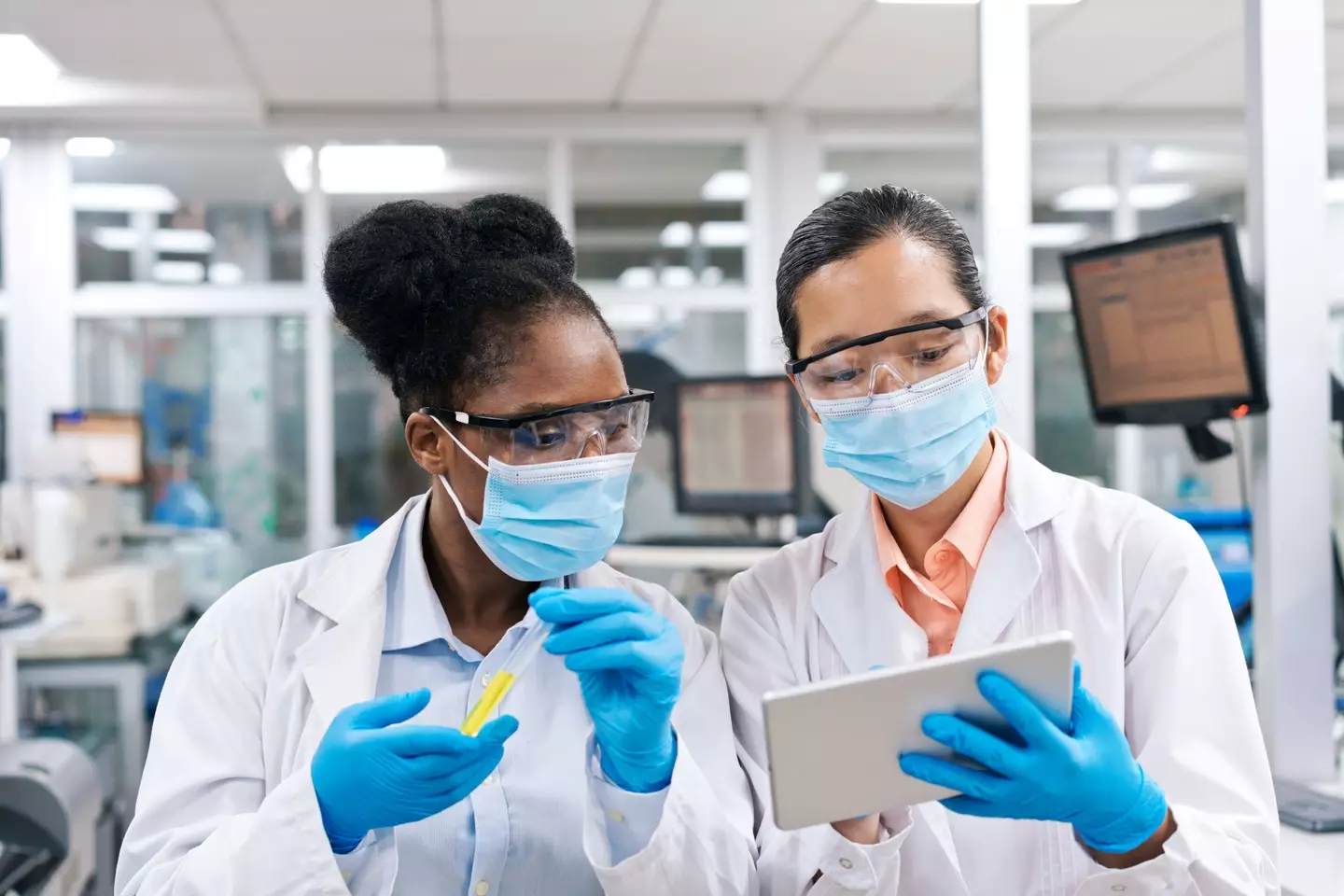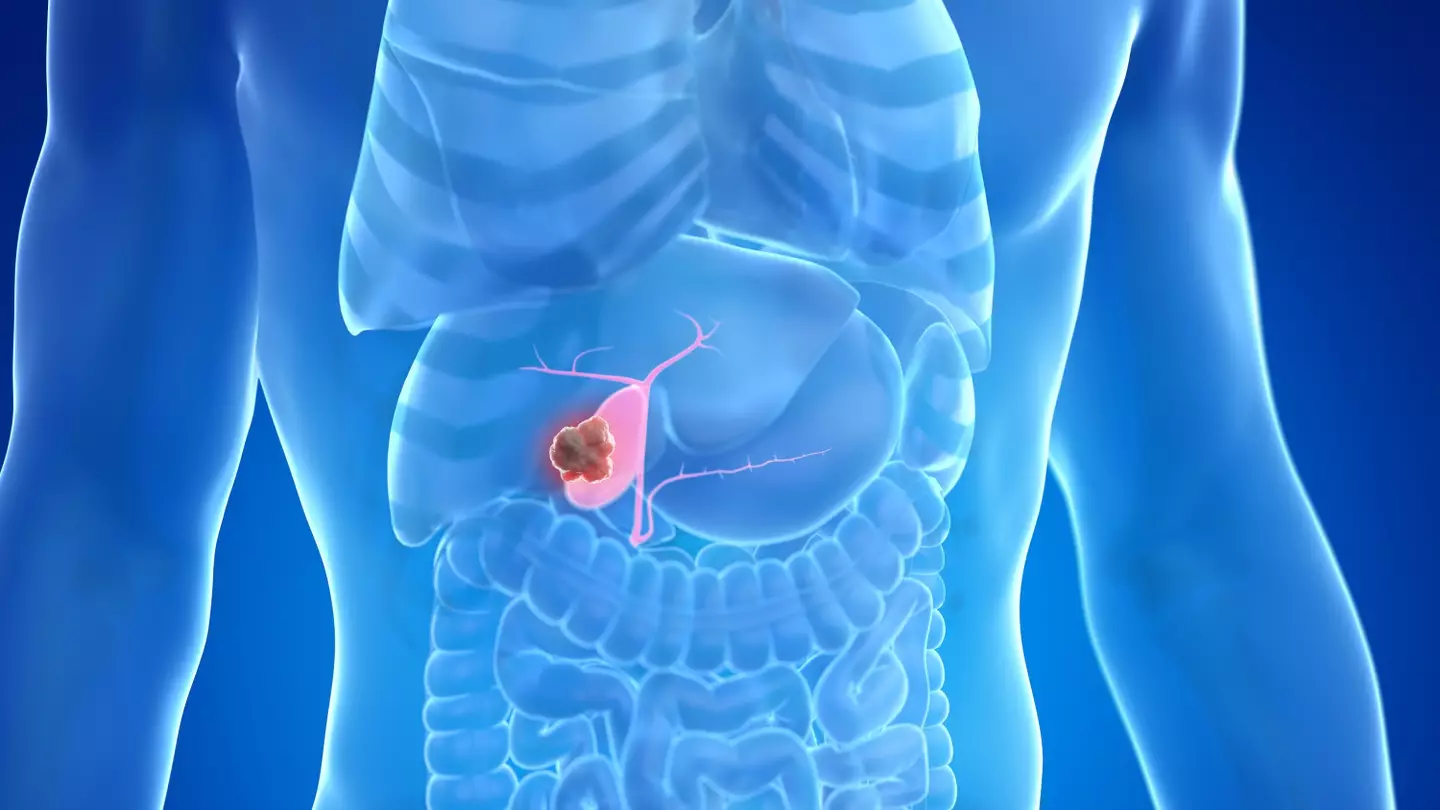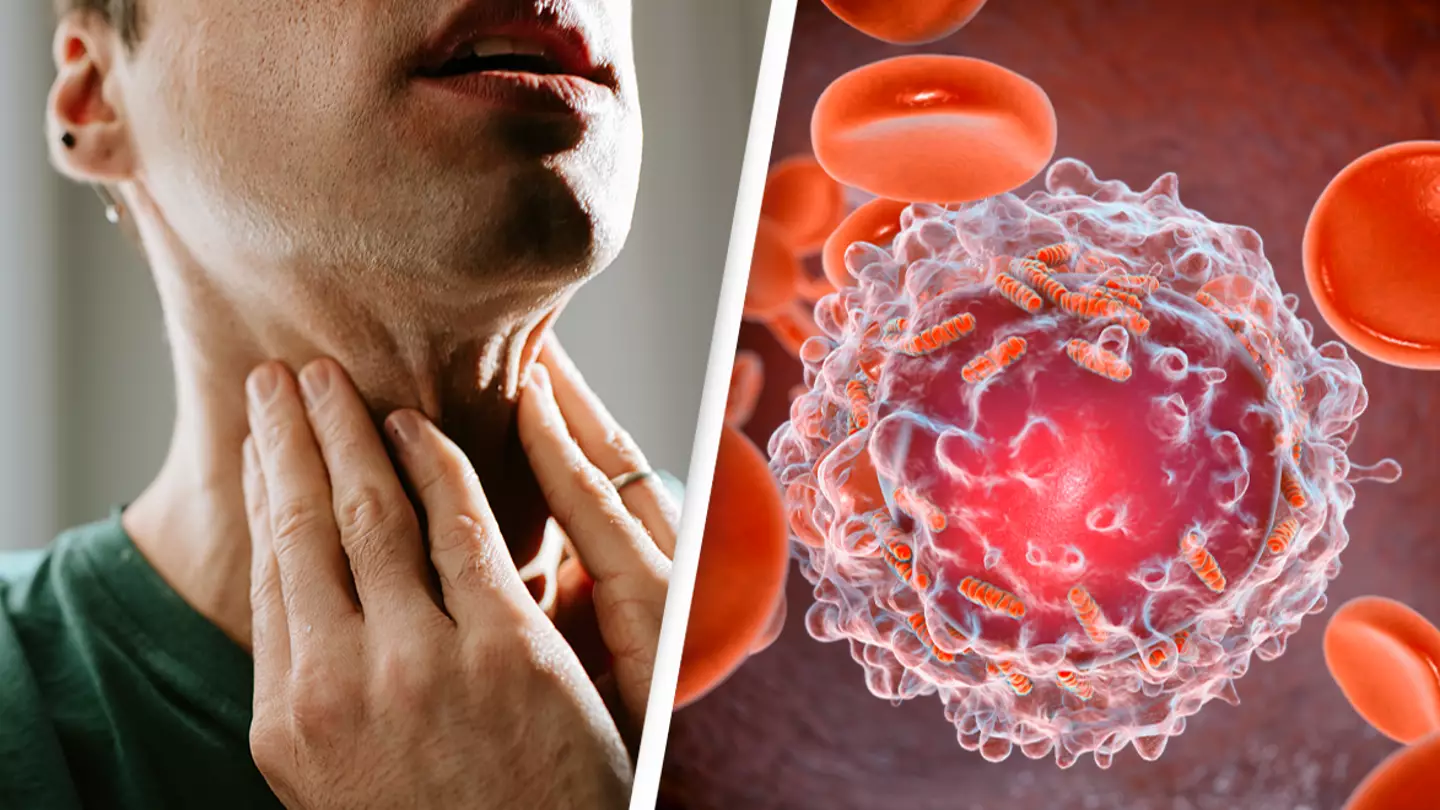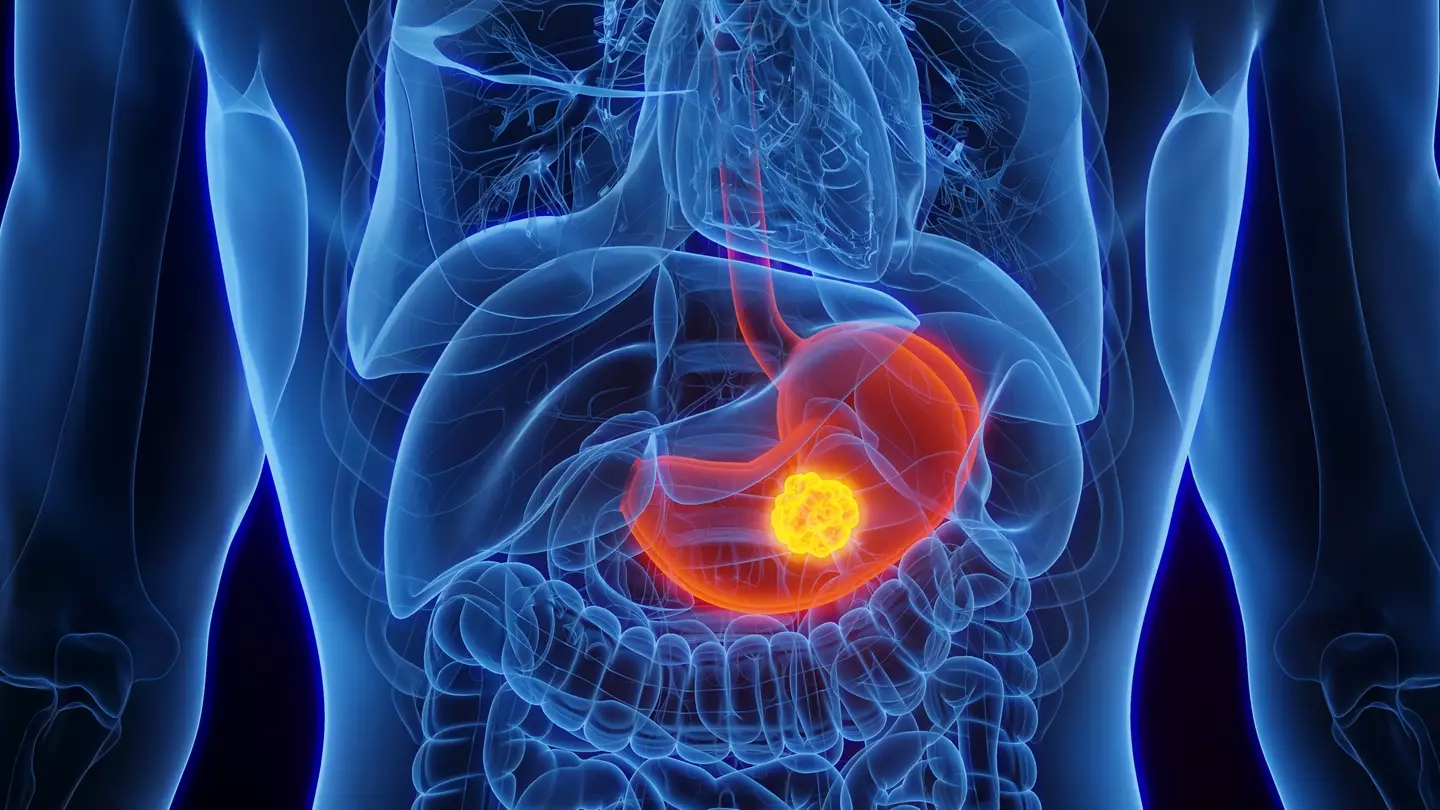
A middle school student has discovered a groundbreaking compound with the poo-tential to safeguard against cancer.
Camarria Williams collected goose droppings from a pond near Garfield Park in Chicago as part of a science project in collaboration with the University of Illinois Chicago (UIC).
Laboratory tests showed that the excrement contained a compound that had never been seen before which slowed the growth of human melanoma and ovarian cancer cells.
Williams was one of a handful of middle school students taking part in the 14-week science program which focused on growing antibiotics from bacteria discovered from natural sources.
All the kids were aged between 11 and 14 and selected different things in their environment to sample for bacteria. Some of the students chose lake water, insects, flowers, a playground slide, and an air conditioning filter.

Under the supervision of Professor Brian Murphy and researchers from UIC, they collected 40 samples and performed over 5,500 tests. Some were then chosen for further analysis and the most promising samples were screened by UIC graduate students and postdoctoral mentors.
Williams’ goose dropping sample revealed a new compound scientists had not seen before. A press release published by the American Chemical Society explains one of the 14 samples of goose poo collected contained a strain of bacteria called Pseudomonas idahoensis. Research found it had antibiotic activity and produced a never-before-seen compound.
University researchers then determined the compound’s molecular structure using nuclear magnetic resonance and mass spectrometry. They named the compound orfamide N.

This compound was not responsible for the antibiotic activity the team originally observed from P. idahoensis, it did inhibit the growth of human melanoma and ovarian cancer cells in culture tests.
The discovery has made scientists excited because further tests and studies could potentially reveal further beneficial properties, the press release explains.
The incredible findings have been published in the journal ACS Omega, with Williams credited as a co-author.
Williams was recruited through the Boys & Girls Club of Chicago.
The press release says the purpose of the program is due to, ‘inequities in educational resources, especially those in science, engineering, technology and math (STEM), where experiments are expensive, have kept some students underrepresented in these fields’.
It adds that engaging young learners in real, high-quality research, the kids have a chance to learn and ‘see themselves as scientists and explore careers in science with hands-on experience’

The data from Cancer Research UK has shown a significant rise in cases since the early 90s.
Cancer has always been a concerning disease, and due to advancements in technology, we have gotten better at both diagnosing and treating the disease.
We’re also able to pinpoint which part of the body is developing the cancer cells and highlight what actions increase and decrease the likelihood of getting this type of cancer.
However, according to research from charity Cancer Research UK, there is a form of cancer that doctors have been seeing more cases of in the country.
Not only is there an increase, but it’s mainly being seen in young people.

Gallbladder cancer is rare, but there has been an 84 per cent rise in cases of the gastrointestinal cancer among Britons aged 24-49 since the early 90s.
The gallbladder is an apple-sized organ near the liver, and is primarily responsible for storing bile, a substance used by the body to break down the fats we eat.
Experts believe the reason for the increase may be in changes to the diet that have happened over the last few years among young people.
This would ultimately cause subtle changes to the bacteria in our gut, the microbiome.
Diets known to include significant ultra-processed and processed foods are believed to increase a person’s chance of developing certain types of cancers.
In the UK, thankfully, gallbladder cancer cases are rare, with just over 1,000 cases diagnosed each year.
As well as this, case numbers remain small, with only about 35 new people diagnosed among the 25 to 49 group per year, on average. This is compared to hundreds among older Brits who remain the most common patients diagnosed.

Professor Karol Sikora, who specializes in oncology and has been described as a leading world authority on cancer, has said the increase had been clear for years, according to a Mail Online report.
In addition to noting the possibility of diet being a factor, he listed a host of other possibilities seen in modern living. He noted pollution, alcohol consumption, junk food consumption, and more stressful lives, can have knock-on impacts on a person’s microbiome, and in turn influence cancer risk.
He did note that pinpointing the cause to one factor is difficult.
He said: “It’s just impossible to measure…it’s a complex series of things that can affect it.”

A doctor has shared some little-known-about symptoms of skin cancer that you should be wary of.
Skin cancer affects millions of people across the globe each year and is one of the most common cancers in the United States.
As per the Skin Cancer Foundation, one in five Americans will develop skin cancer by the age of 70, and more than two people die each hour in the States from it.
With skin cancer being a common cancer that people develop, it’s likely you’ll know of some symptoms to look out for.
Some of these include a lump, an ulcer that doesn’t heal within four weeks, red patches on your skin, or a change in freckles or moles you have.
But Dr Emily Alfonsi, a skin cancer doctor at Shade Skin, has highlighted other symptoms that could be skin cancer indicators.
“Skin cancer doesn’t always present in obvious ways,” she told Mirror Online.
“Recognising subtle changes in your skin, nails, or lips can be crucial for early diagnosis and treatment. It’s vital to be proactive in seeking medical advice if something doesn’t seem right.”
Speaking on the importance of early detection, Dr Alfonsi said skin cancer is ‘highly treatable’ if found early.

Chapped lips
In regards to lesser-known symptoms of skin cancer, one is persistent chapped lips.
Chapped lips are more common in the winter months, but if they remain sore and cracked despite using moisturizing treatments, it could indicate squamous cell carcinoma (which is caused by sun damage).
“If your lips do not improve with treatment or you notice additional symptoms such as persistent sores, lumps, or changes in color, it’s important to seek medical attention,” Dr Alfonsi said.
Nail discoloration
As well as monitoring your lips, another thing to keep an eye on is your nails – discoloration in particular.
You should look out for ‘a dark streak, spot, or irregular pigmentation under the nail’, as it could be a sign of subungual melanoma – a rare but serious type of skin cancer.
Unlike other skin cancers, subungual melanoma is not linked to sun exposure, Cleveland Clinic explains.
“It’s most likely to develop in your big toe, thumb or index finger,” it adds.

Some skin cancer symptoms might appear harmless at first, something which Dr Muneeb Shah knows first-hand.
The doctor said he’d noticed a ‘pink, itchy bump that could be mistaken for a pimple or an ingrown hair’ that he wasn’t worried about, but he accidentally scratched it and made it bleed.
He then suspected that he had basal cell skin cancer, which was later confirmed by further tests.
Dr Shah went to have Mohs surgery, which is described as a ‘controlled surgery’ to remove skin cancer.

For those suffering with anxiety, a groundbreaking neurological discovery has been made that could one day help drastically alleviate worries.
Though there will be more beneficiaries than just the anxious, as the revelation may pave the way for future researchers to develop treatments for those with stress disorders, as well as a single pill providing some vital benefits of yoga.
Scientists Jinho Jhang, Seahyung Park, Shijia Liu, David D. O’Keefe and Sung Han, of the Salk Institute in San Diego, California, have realized there is a link between regulating emotions and voluntary breathing following studies on mice.
They published their findings in Nature Neuroscience last month, with the abstract reading: “Although breathing is primarily automatic, its modulation by behavior and emotions suggests cortical inputs to brainstem respiratory networks, which hitherto have received little characterization.
“Here we identify in mice a top-down breathing pathway from dorsal anterior cingulate cortex (dACC) neurons to pontine reticular nucleus GABAergic inhibitory neurons (PnCGABA), which then project to the ventrolateral medulla (VLM).

It continued: “Optogenetic stimulation of the dACC→PnCGABA→VLM circuit simultaneously slows breathing and suppresses anxiety-like behaviors, whereas optogenetic inhibition increases both breathing rate and anxiety-like behaviors.
“These findings suggest that the dACC→PnCGABA→VLM circuit has a crucial role in coordinating slow breathing and reducing negative affect. Our study elucidates a circuit basis for top-down control of breathing, which can influence emotional states.”
If, like me, you have no scientific background, I’ll dumb it down a little for you.
Up until this discovery, there was little known about how our brain regulates breathing and the knock-on effect it has on anxiety – we only really know about subconscious breathing mechanisms.
While we don’t really have to think about breathing, meditation is key in yoga and so slowing down your breathing is one way to self-soothe.
The authors of the study were looking to uncover conscious top-down mechanisms, which for us unscientific folk are just mental processes that use prior knowledge and expectations to interpret new information, that connect breathing with emotional regulation.

If your anxiety is treated in the future, you might have this little guy to thank (Getty Stock Image)
Anyway, after a series of tests they realized that a part of the brain – the brainstem region – initiates slower breathing while also initially identifying the ‘breathing circuit’ in a mouse’s brain.
They then followed through on a theory where they discovered that when the ‘anterior cingulate cortex’, at the frontal region of the circuit, was connected to the brainstem region it calmed the mice down.
“Our findings got me thinking: could we develop drugs to activate these neurons and manually slow our breathing or prevent hyperventilation in panic disorder?” study co-author Jinho Jhang said, as per the Independent.

And Researchers from the Rutgers Robert Wood Johnson School of Medicine in New Jersey put their heads together to create an oral rinse that could prove vital in early detection of stomach cancer.
In their study which is yet to be published, researchers analyzed bacterial samples from 98 people – 30 with known gastric cancer, 30 with premalignant gastric conditions, and 38 people without gastric health issues, Medical News Today reports.
In particular, participants’ microbiomes were studied by researchers. The microbiome is the collection of all microbes, such as bacteria, fungi, viruses, and their genes, that naturally live on our bodies and inside us, explains the National Institute of Environmental Health Sciences.
While there were limited differences in the microbiomes of precancerous and cancerous groups, there was reportedly ‘distinct differences’ between these two groups and the healthy control group.

There were 13 types of bacteria in particular that researchers found to have shown the most significant differences between the control participants and cancerous and pre-cancerous patients, as per Mail Online.
Scientists now hope that the early study could prove that changes in the microbiome could occur as soon as the stomach environment starts to undergo changes that will eventually develop into cancer and that oral bacteria could be used a biomarker for gastric cancer risk.
In light of their promising findings, researchers now plan to conduct more extensive studies.
Dr. Elliot Newman, the chief of surgical oncology at Northwell Lenox Hill Hospital in New York, has since shared his hopes that the oral rinse could ‘in theory’ cure all stomach cancer patients.

He told Medical News Today: “It looks like the researchers used the samples to see each group’s shared characteristics. They could then compare other samples to see where they were – healthy, precancerous, or cancerous.”
Dr. Newman, who wasn’t part of the study, continued: “Work like this is always exciting, but we have to see what happens in the long term.
“In theory, someone could have the rinse and it can pick up changes in the stomach that might be precancerous. If we can do that, we can cure everyone.”



